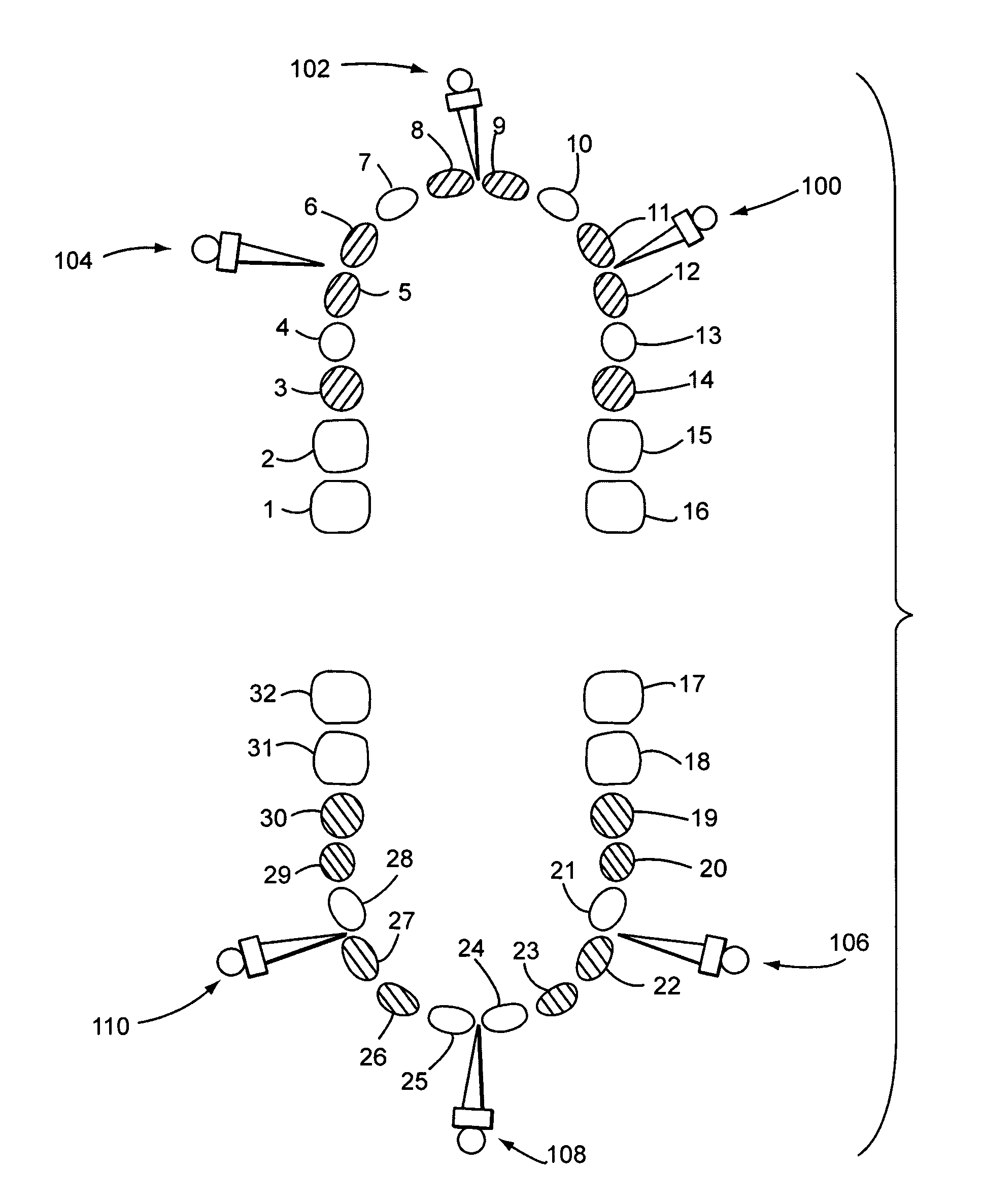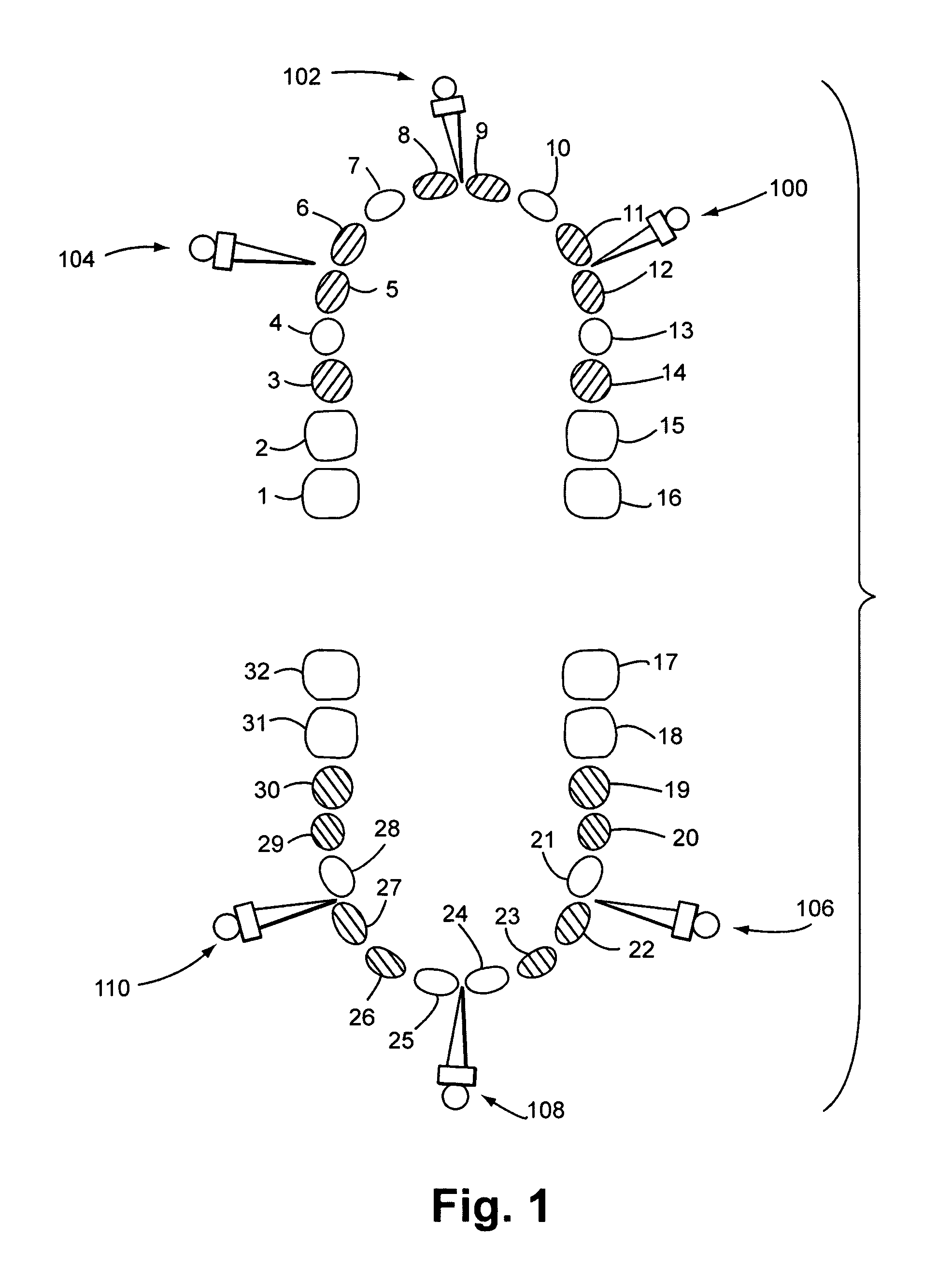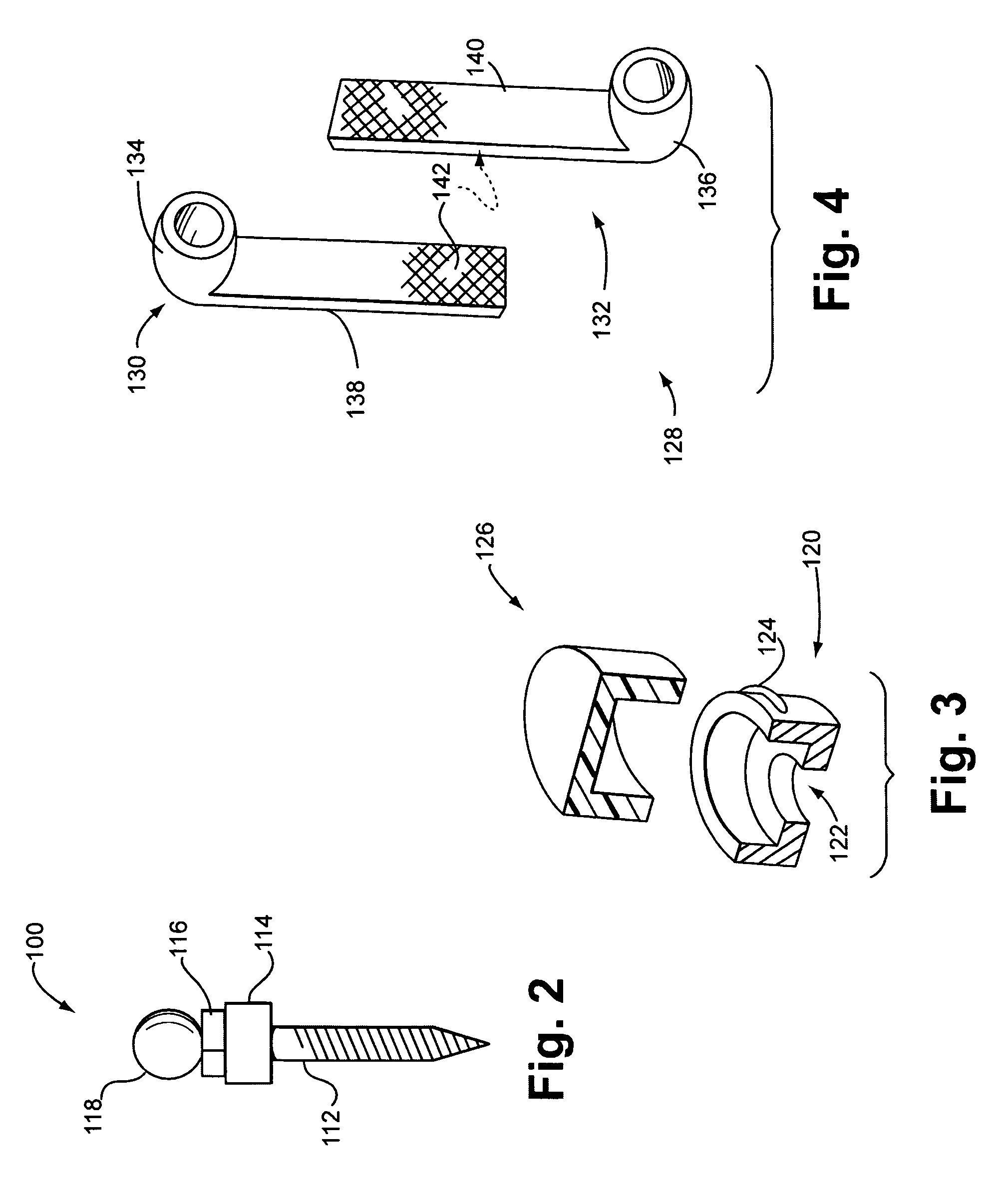Capture of a planned vertical dimension of occlusion to facilitate simultaneous restoration of both maxillary and mandibular arches using implants
a technology of occlusion and planned vertical dimension, which is applied in the field of planned vertical dimension of occlusion to facilitate simultaneous restoration of both maxillary and mandibular arches using implants, can solve the problems of significant disadvantages of procedures and failures of computerized approaches, and achieve the effect of reducing clinical time and time window
- Summary
- Abstract
- Description
- Claims
- Application Information
AI Technical Summary
Benefits of technology
Problems solved by technology
Method used
Image
Examples
Embodiment Construction
[0042]The present invention provides a method of and apparatus for capturing the three dimensional orientation of the jaws of a patient at a planned vertical dimension of occlusion (VDO), to enable fixed restoration of both dental arches simultaneously in one surgery. This requires installing geometric apparatus at the beginning of the single surgery in the mouth of the patient. The geometric apparatus captures and preserves in fixed form sufficient geometric relationships of the mouth to enable a dental professional to fabricate dental prostheses to an accurate reproduction of an appropriate occlusal plane. This procedure requires three reference points at the maxillary arch and three reference points at the mandibular arch. The six total reference points are fixed by the assembly in three dimensions such that not only the VDO is captured, but the exact positions of the six points in three dimensional space are captured.
[0043]FIG. 1 is a schematic representation of the maxillary an...
PUM
 Login to View More
Login to View More Abstract
Description
Claims
Application Information
 Login to View More
Login to View More - R&D
- Intellectual Property
- Life Sciences
- Materials
- Tech Scout
- Unparalleled Data Quality
- Higher Quality Content
- 60% Fewer Hallucinations
Browse by: Latest US Patents, China's latest patents, Technical Efficacy Thesaurus, Application Domain, Technology Topic, Popular Technical Reports.
© 2025 PatSnap. All rights reserved.Legal|Privacy policy|Modern Slavery Act Transparency Statement|Sitemap|About US| Contact US: help@patsnap.com



